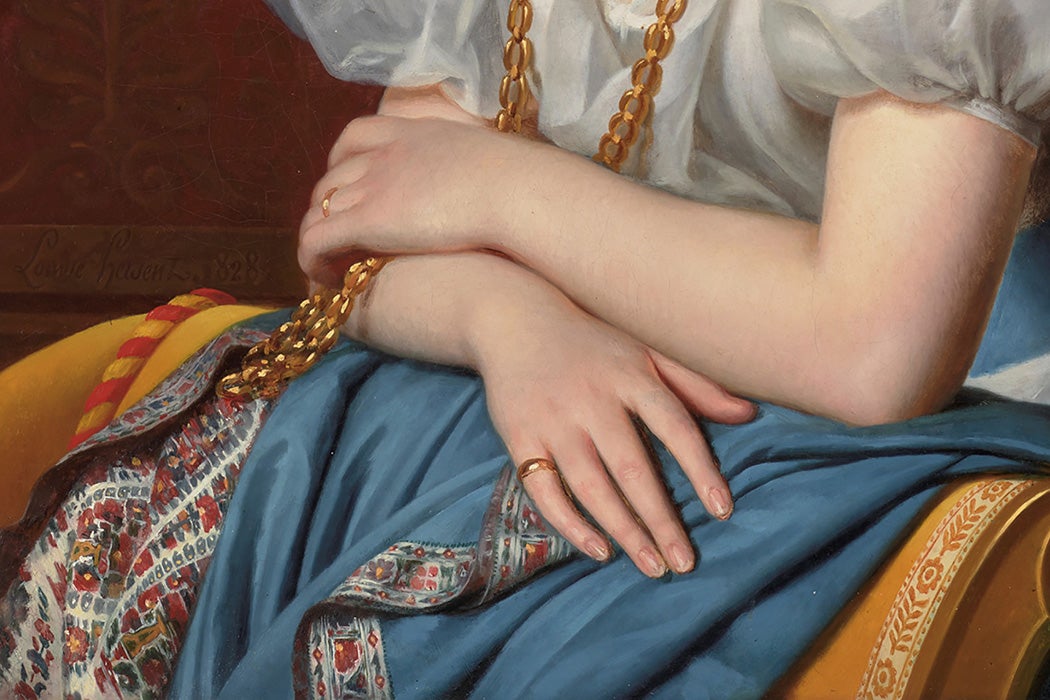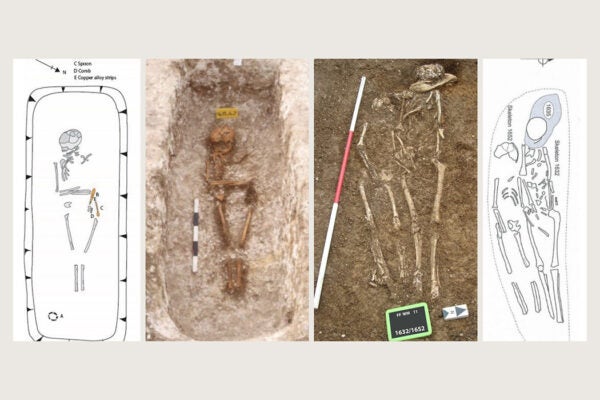“It seems a pity that the fat, easy, lazy Bokharan, and the slim, lithe, patient Hindoo, should not come to Paisley, and see how shawls are made,” Victorian author Harriet Martineau muses. Martineau’s boast about the textile factories of the Scottish town of Paisley, published in the periodical Household Words in 1852, was more than an expression of pride in British efficiency.
“Shawl narratives outline the processes through which empire was domesticated as Kashmiri shawls became central components of larger Victorian discourses,” writes historian Chitralekha Zutshi of the textiles that introduced the word cashmere into English. In fact, the English word shawl also comes from the Persian and Kashmiri language, where it refers to both the outer garment and a type of woolen fabric. These Kashmiri shawls lay at the heart of imperial debates about industrialization, authenticity, and taste, Zutshi explains.
Kashmir, which is still a violently disputed region, entered the British Empire with the signing of the Treaty of Amritsar in 1846. In that document, ruler Gulab Singh agreed to make an annual payment of goats and shawls to recognize “the supremacy of the British Government.”
The treaty’s terms illustrate the importance bestowed on the shawls.
“The intenseness of the Kashmiri shawl’s materiality—its exquisite softness, delicacy, and warmth—was very much a part of its appeal in Victorian Britain,” writes Zutshi, pointing to “its associations with luxury and beauty.”
Indeed, genuine Kashmiri shawls in that period could cost £200 or more. The value was determined by the high fabric quality, as the British failed to successfully breed their own goats. In contrast, mass-market replicas made on an industrial scale in Paisley—or in Norwich, another English textile hub—could go for as little as £3. So prolific was the town’s output that Paisley came to lend its name to the distinctive pine-cone pattern reproduced by its workers.
Some Victorians wrung their hands over such reproductions, with essayist Ralph Nicholson Wornum lambasting the manufacture of “spurious Cashmeres.” Since English and French designers were superior to the “hereditary weaver of the East,” they ought to develop their own national patterns instead of imitating Eastern patterns, Wornum asserted.
Yet, for Harriet Martineau, imitations were “a domestic, and modern, improvement” because their modern production methods were more important than the actual material, writes Zutshi. “Although Kashmiri shawl patterns were clearly superior, the ‘Orientals,’ according to Martineau, were unwilling and incapable of adapting to industrial technologies, such as the Jacquard loom.”
While she described the Kashmiri weaver as toiling over a primitive loom, weaving shawls with patterns that had been passed down to him through generations, Martineau’s description of the shawl production process in Paisley evoked a sense of constant motion, demonstrating the genius of English industrial innovation.
The shawl wasn’t the first commodity to go through imperial domestication. The British already had experience mass-producing cotton calico with prints such as chintz, and Dutch potters in Delft had long mastered the art of copying Chinese blue-and-white ceramics.
More to Explore
A Mini History of the Tiny Purse
But the novelty of faux Kashmiri shawls, according to Zutshi, “is that the acquisition of technical knowledge from the ‘Orient’ and the resultant production of imitations was now accompanied by the insertion of these ‘new’ goods into a narrative of British imperial modernity.” She adds that “Martineau thus legitimized the consumption of imitation shawls by middle-class British women, who could not hope to afford a shawl from Kashmir but could still wear a Paisley shawl with pride and as a marker of respectability.” In this view, the weavers of Paisley were making not “cheaper, pirated copies” but “modern goods” fit for middle-class British consumers.
At the same time, the antiquity of the Kashmiri weaving tradition conferred qualities like grandeur and majesty onto the corresponding British products. For instance, Arthur Lasenby Liberty, who founded Liberty’s of London in 1875, promised “to educate the British public to appreciate the gems of the intricate art of the East,” which his store claimed was more tasteful—“superior in colour and more varied and beautiful in design.”
Weekly Newsletter
He claimed that his store was set up in opposition to “mid-Victorian taste” in commercial goods, yet he himself was hardly a purveyor of genuine loom-woven shawls from Kashmir. Rather, the cloth listed in its catalogs was made with wool imported from India and woven in Yorkshire or Lancashire in England. In other words, this production process used “the good qualities of European manufacture” as its finishing touch, as a catalog from 1883 advertised. In this way, “shawl narratives brought empire to the center of Victorian anxieties and debates about the meaning and impact of industrial modernity.”
“Whether derided or lauded,” writes Zutshi, “Kashmiri shawls (and their imitations) allowed Britons living in the metropole to interact with the discourse and culture of transnational production and consumption and through it to naturalize a specific part of the empire as they partook in its lived experience.”
Support JSTOR Daily! Join our membership program on Patreon today.







